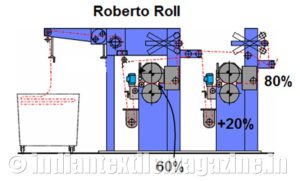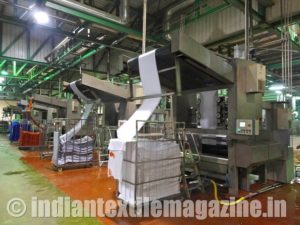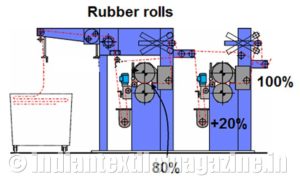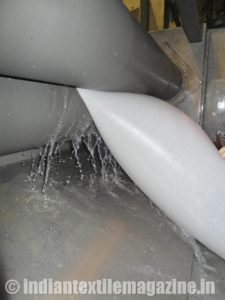Better fabric quality, faster throughput and significant energy savings are the triple benefits from using Roberto rolls in knit fabric finishing. Calculations based on industrial installations in the Brazilian textile industry have proved that a typical knitted fabric wet processing plant can apply Roberto’s unique liquid expression properties to leave 25% less water in the material at the stenter.
This energy cost saving potential is achieved while also creating a softer handle in the fabric, according to a leading finishing plant in Brazil.
Richard Hough is convinced that there is great scope for notable improvements in product quality, productivity and profitability in wet-on-wet knit fabric padder lines, where chemical softeners are applied, and is able to provide detailed technical and economic guidance to assist companies in incorporating the Roberto into these processes.
Says Hough Sales Director Mike Urey: “We have found that Roberto works very well in the knitted industry. For example, when our agent in Brazil installs a Roberto in knitted lines he is able to demonstrate the savings that can be made by the customer, which is subsequently borne out over time under production conditions. We are sure that this experience can be successfully applied by finishers in other areas.”
 Typically, the Roberto is used in wet on wet knitted fabric applications, in which the first bath contains only water, to immerse the fabric and then squeeze evenly, so that finishing chemicals in the next bath are applied as efficiently and uniformly as possible across the entire width of the material.
Typically, the Roberto is used in wet on wet knitted fabric applications, in which the first bath contains only water, to immerse the fabric and then squeeze evenly, so that finishing chemicals in the next bath are applied as efficiently and uniformly as possible across the entire width of the material.
In this sequence, changing the first mangle to a Roberto roll means that the second mangle can exert increased pressure, to squeeze more water out to retain the same chemical penetration into the fabric.
Says Mike: “If the first squeeze can achieve only 80% pick-up, and 20% of softener (finishing chemical) needs to be applied, then the pressure on the second squeeze needs to be below maximum to achieve 100% pick-up before the stenter. However, using a Roberto at the first squeeze can achieve 60% or less pick-up, and this means that the second squeeze can be pushed to maximum pressure to achieve the same 80% level as the conventional rubber roll.
“The result is that the material going to the stenter is 25% drier, yet contains the same amount of softener. The customer then has the option to increase the line speed, or to save costs through the use of less drying energy in the stenter.”
Feedback from a leading Brazilian customer also underlines the quality advantage arising from using a Roberto roll at the first squeeze. The customer reports that its products are now being produced with a softer feel, which it attributes to the more delicate squeezing effect of the Roberto compared to rubber rolls. The effect is said to create a much better finish in the fibres and the knit fabric construction.
Hough adds that still further benefits would result from using two Roberto rolls at the first squeeze, which is calculated to give about 5% additional expression, as well as an even softer feel to the fabric.


